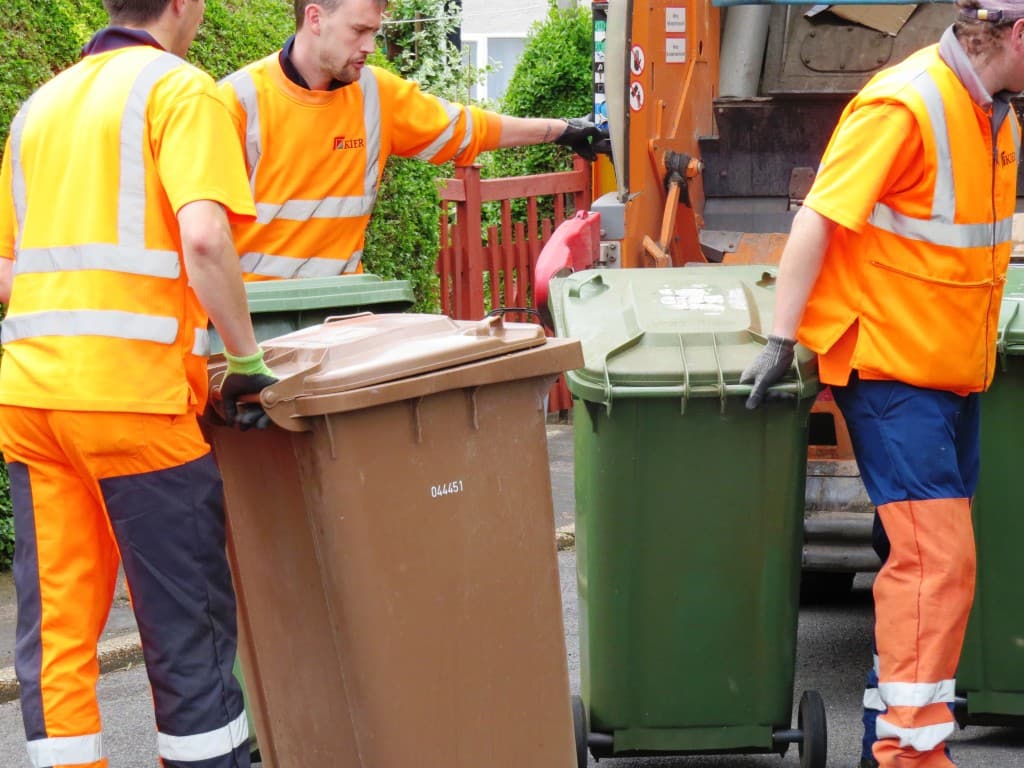If the figure is verified by WasteDataFlow, the Environment Agency and Defra, this is likely to challenge East Lindsey district council's position as the best recycling local authority in the country.
East Lindsey topped the table in 2007/08 with a 58% recycling rate. This came after the table had been dominated for two years by another Lincolnshire council, North Kesteven.
This year, East Lindsey is actually expected to come in third place with a 60% recycling and composting rate for 2008/09, after a surprise appearance from Cotswold district council in Gloucestershire in second place. Cotswold DC appears to have risen 61 places to second place with a 60.95% recycling and composting performance for the year.
Other findings suggest that North Kesteven district council has dropped from second position in 2007/08 to around tenth, while South Shropshire district council – which became part of a Shropshire unitary authority on April 1 2009 – still managed to climb the table from tenth to lie within the top five places.
The provisional results suggest that at least three councils are believed to have recycled and composted more than 60% of household waste, which at one point was viewed as a glass ceiling by many inside the industry (see letsrecycle.com story).
Staffordshire Moorlands
Before September 2007, the council offered a weekly collection of residual waste in a 140 litre wheeled bin and a weekly collection of recyclables, using a black box. However, the council decided to move to alternate weekly collections using a 180 litre blue wheeled bin for residual waste alongside a 140 litre bin wheeled bin for dry recyclables, a 240 litre brown bin for organic waste, 25 litre caddies for food waste collections and bags for paper and textiles. The council also took its collection service in-house.
The council said that it also sent an information pack on the proposed changes to households and produced a promotional DVD and dedicated web pages, held 21 road shows across the local authority and also placed liveries on collection vehicles explaining the service.
Effect
The council claimed that the changes had started to pay dividends in the 2007/08 financial year but the full effect was now visible.
Rebecca Dodd, waste awareness officer at Staffordshire Moorlands, said: “Last year the 07/08 figures represented just six months of our new service and now we have had a full year with the new service. We have also had a hell-of-a-lot of promotion, we did have some opposition and that rumbled on for a while but we are now rolling.”
Addressing some of its unique challenges, Ms Dodd said that Staffordshire Moorlands encompassed a large rural area based around the three market towns of Leek, Cheadle and Biddulph, which posed problems like having to perform an eight mile round trip to collect from just two houses. The population of the district is 95,400.
Looking ahead, Ms Dodd said that the only improvement that they could make was to extend the material stream to include things such as drinks cartons and that the council was also rolling out the service to its communal properties and offering the same recycling system for schools across the authority.
Cotswold
One of the best performing councils for 2008/09 was seen in the South-West, with Cotswold district council vastly improving its recycling and composting performance. The local authority registered a 43.29% rating in 2007/08 but said that it had leapt up to 60.95% over the past 12 months.
Speaking to letsrecycle.com, Scott Williams, waste manager at Cotswold, said: “In June 2008 we implemented a revised waste and recycling collection service which has had a dramatic improvement on our recycling and composting performance and associated landfill diversion.”
The council, along with its waste and recycling collection contractor SITA UK, introduced an alternate weekly collection with weekly food collections in June 2008. Redesigns to the system saw a blue sack introduced for card and cardboard recycling alongside a black box for paper, magazines, glass bottles/jars, cans/tins and aerosols.
In addition, the council reduced the size of its residual waste bins to 180 litres and also started a garden waste collection scheme, which residents have to pay to participate in.
However, the council does not collect plastic bottles at the kerbside, claiming that the cost of introducing the material stream could not justify the return it would get from the bottles, and instead it encourages residents to make use of the civic amenities sites.
Improvements
James Thompson, waste prevention officer at Shropshire council, said: “As you can see the momentum has been maintained in South Shropshire which is still easily the best performing area in the county of Shropshire at nearly 58% overall recycling.
“It just shows how important an issue food waste is. South Shropshire is a great example of what can be achieved with source separated collection of food waste because the other parts of Shropshire, which don't collect food waste yet at all, behind South Shropshire in terms of recycling.
“We do plan to implement food waste collections in the rest of Shropshire in the longer term, so hopefully then the other areas can all catch up with South Shropshire's lead. All in all it's a very good performance though, so the people of Shropshire should be very proud of their efforts,” he added.
Somewhat further down the table, the London borough of Bexley claimed that it had become the first London council to achieve a 50% recycling rate and expected further increase this financial year.
Stephen Didsbury, waste and recycling manager at Bexley, said: “We have changed our service, we extended recycling to weekly and have food and garden waste weekly and said to residents “here's the wheeled bin you've been asking after for 20 years but it's been shrunk in the wash” so it is only 180 litres and we'll collect it every fortnight.”
Scrutiny
Figures for recycling and composting performance in the fourth quarter of 2008/09 are set to be submitted to waste data reporting site WasteDataFlow by the end of June, where they will then be verified before being sent to the Environment Agency and Defra for further scrutiny.
At the end of the year the figures from WasteDataFlow will be used by the Environment Agency for Landfill Allowance Tax Scheme calculations. Fully-audited recycling and composting performance for 2008/09 will then be released into the public domain by Defra at the end of year.
Provisional top ten councils for recycling and composting in 20008/09
| Expected ranking in 2008/09 | Local authority | Ranking in 2007/08 | Recycling and composting rate in 2007/08 | Provisionl recycling and composting rate in 2008/09 |
|
1 |
Staffordshire Moorlands DC |
8 |
52.87 |
63 |
| 2 | Cotswold DC |
63 |
43.29 |
60.95 |
| 3 | East Lindsey DC |
1 |
58.4 |
60 |
| 4 | South Shropshire DC |
10 |
52.06 |
57.8 |
| 5 | South Hams DC |
2 |
57.07 |
57.65 |
| 6 | Huntingdonshire DC |
5 |
55.14 |
57.4 |
| 7 | Teignbridge DC |
4 |
55.58 |
57 |
| 8 | Uttlesford DC |
6 |
54.5 |
56 |
| 9 | North Kesteven DC |
3 |
55.94 |
55.7 |
| 10 | Waveney DC |
7 |
53.21 |
55 |











Subscribe for free